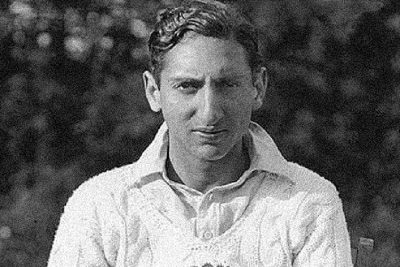The Deadly Premonition of Sugar Ray Robinson that came True, 1947
Share

Sugar Ray Robinson in the year 1947. (ACME / Wikimedia Commons)
Sugar Ray Robinson is known as the greatest pound-for-pound boxer of all time, he won the middleweight champion five-times during his twenty-five years career from 1940 to 1965. Born with the name Walker Smith Jr on 3rd May 1921, he grew up in Harlem, New York. He once borrowed the identification card of another youngster named Ray Robinson which earned him the nickname Sugar Ray Robinson. He never used his real name since the nickname Sugar Ray Robinson stuck.
He was enrolled in the army during the Second World War and was mainly seen boxing with the then heavyweight champion Joe Louis during exhibition tours at military bases. Until 1943 Robinson maintained a perfect record, which included 29 knockouts.
He earned his first middleweight title in 1951 but lost the title after five months. He regained his title two months later with a dramatic knockout of his opponent. After another loss, he made an entry in the entertainment industry as a tap dancer and remained there for nearly two years before regaining the title in 1955 and retaining it until 1960 after which he never earned back the title.
He announced his retirement in 1965, setting a record of 173 wins from 200 fights and merely 19 losses. He was elected to the Boxing Hall of Fame in 1967. However, an incident in his early years painted a grim picture of the world of boxing.
Sugar Ray Robinson vs. Jimmy Doyle
Robinson won the welterweight title in 1946 against Tommy Bell. In his first title defence, he was scheduled to fight Jimmy Doyle on June 25, 1947. In the fight, Robinson dominated his opponent in six out of the first seven rounds and was on the receiving end in the sixth round of the match. However, in the eighth round, a brutal left hook floored Doyle, resulting in Robinson’s win over him by TKO, a knockout.
Doyle was immediately rushed to the hospital on a stretcher and was soon operated to remove a clot. But his injuries proved to be fatal and was declared dead due to a cerebral haemorrhage sometime later.
Robinson’s nightmare
Robinson visited his opponent in the hospital and famously remarked that he had dreamt of the incident; during a candid conversation with the reporters assembled at the hospital. “Jeez, this is awful. For three days I’ve been afraid that something like this would happen,” he reportedly said and explained that he had been staying over at a friend’s place when he dreamt that Doyle would succumb to his injuries from the blows he received.
Robinson indicated his uneasiness by asserting that he had trouble coping with the sight of Doyle lying on the canvas in the dream which seemed so real that he had cold sweats on waking up. Various reports later suggested that Robinson had decided to pull out of the fight because of his dream. But, the fight promoters refused to let him back out from the fight and tried several methods to convince Robinson. Finally, a priest was tasked with convincing Robinson that he had a bad dream and he should continue with the fight. Robinson reluctantly agreed to continue.
Investigation and aftermath
Questions over the fitness of deceased boxer, Doyle, surfaced and were subsequently quashed by The Cleveland Boxing Commission, who issued a report stating that he had been fit. The coroner, Dr. Samuel J. Gerber, reported that the blows he received to the jaw were fatal, along with evidence suggesting prior brain damage and a concussion.
It was revealed that Doyle received injuries in a prior fight with Babe McCoy in 1946 and he was asked not to fight anymore by his close aides. This incident proved to be a defining moment in Robinson’s career and the sport of boxing, as told by Robinson himself during the coroner’s inquest. Upon being asked if he intended to get Doyle “in trouble,” Robinson replied, “Mister, it’s my business to get him in trouble.”
It was later reported that Robinson had tried to help Doyle’s family by donating some amount of money through a trust fund after learning of Doyle’s attempts to buy his mother a house, in tune with a description of him as “pound for pound, the best.”
Enjoyed this article? Also, check out “The Time When Men Fought Bears“.
Recommended Read:
Pound for Pound: A Biography of Sugar Ray Robinson | By Herb Boyd & Ray Robinson
Recommended Watch:
The Greatest Boxer Ever Pound For Pound! | YouTube
Fact Analysis:
STSTW Media strives to deliver accurate information through careful research. However, things can go wrong. If you find the above article inaccurate or biased, please let us know at [email protected]













